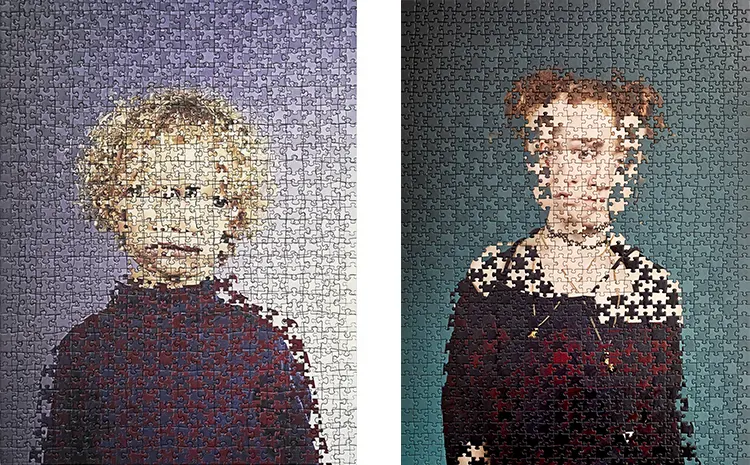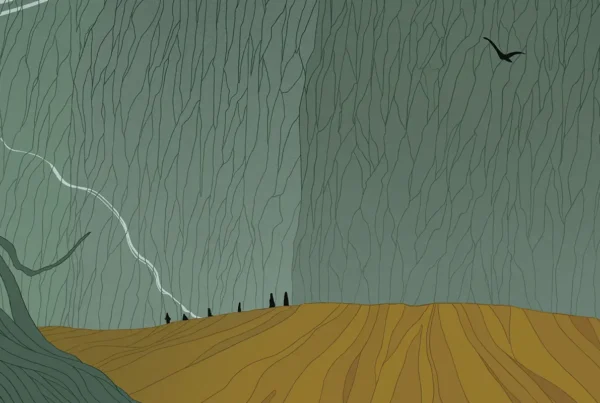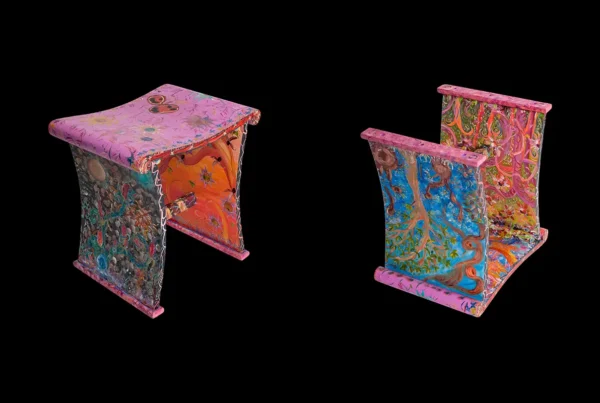From the Black Forest to the Art World: The Genesis of Alma Haser’s Creativity
Born in 1989 in the heart of the Black Forest, Germany, Alma Haser‘s artistic journey is a fascinating tale of evolution and exploration. Immersed in an environment where creativity was as natural as the forest’s dense foliage, Haser’s path to becoming a celebrated artist was significantly shaped by her family’s artistic inclinations. Her mother’s transition from sculpture to pinhole photography and a transformative global journey played a pivotal role in sparking Haser’s passion for photography. This early exposure to the world of art, combined with the influence of her father’s work in painting and sculpting, nurtured a deep-seated creativity that would later define her unique approach to portraiture. Haser’s upbringing, steeped in diverse artistic practices, laid a strong foundation for her innovative work, blending traditional photography with complex paper-folding techniques to push the boundaries of visual storytelling.
Now based between London and the southeast coast of England, Alma Haser has carved a niche for herself in the art world with her distinctively complex and meticulously crafted portraiture. Her works, renowned for their intricacy and the innovative integration of origami and collage, stand as a testament to her relentless pursuit of creativity. The seamless blend of her background in fine art with her pioneering techniques has resulted in portraits that transcend conventional boundaries, inviting viewers into a multifaceted exploration of identity and form. Haser’s ability to infuse her pieces with depth and narrative through the manipulation of paper and images not only showcases her technical prowess but also her profound understanding of the art as a medium for expression and exploration.

Innovating Portraiture: The Fusion of Origami and Identity in the Work of Alma Haser
Alma Haser’s approach to portraiture is a captivating fusion of tradition and innovation. By integrating origami, collage, and mixed media into her photographic work, she invites viewers into a unique realm where the boundaries between two-dimensional portraits and three-dimensional sculptures blur. This methodological innovation is not merely a stylistic choice but a deliberate effort to deepen the narrative and emotional resonance of her subjects. The intricate paper-folding techniques employed by Haser add layers of intrigue and complexity, challenging conventional perceptions of identity and representation. Through this creative amalgamation, Haser’s portraits emerge as dynamic entities, encapsulating the multifaceted narratives and inherent dualities of the human experience. The result is a body of work that is as thought-provoking as it is visually stunning, offering a fresh perspective on the art of portraiture.
Haser’s artistic evolution, particularly following the transformative experience of motherhood, demonstrates her commitment to exploring and expanding the boundaries of her craft. The introduction of needlework and fabric manipulation into her repertoire is a reflection of her adaptability and willingness to incorporate new textures and dimensions into her work. These techniques, born out of a need to balance the demands of motherhood with her artistic endeavors, have enriched Haser’s portraiture with an added layer of depth and tactility. The exploration of these new mediums underscores Haser’s ongoing journey of discovery and experimentation, marking a significant phase in her career where personal growth and artistic innovation intersect. As Haser continues to navigate the complexities of identity, technology, and genetics through her art, her work remains a vibrant testament to the endless possibilities of creative expression.

Alma Haser: The Intertwining of Art and Life Through Motherhood and Community
The advent of motherhood marked a significant turning point in Alma Haser’s artistic journey, infusing her work with new perspectives and techniques. The constraints of time and the quest for a meditative creative process drove Haser to explore the realms of needlework and fabric manipulation, introducing a novel texture and depth to her already multifaceted portraiture. These new methods not only provided therapeutic benefits but also mirrored the evolving narrative of her personal and artistic life. As a mother, Haser found a profound source of inspiration in the challenges and joys of parenting, weaving these experiences into her art. This phase of her career is characterized by a delicate balance between personal growth and artistic exploration, showcasing her ability to adapt and thrive amidst life’s transformations. The integration of textile-based techniques into her portfolio not only highlights her versatility as an artist but also reinforces the intimate connection between her life experiences and her creative output.
Living in Hastings, a vibrant community on the southeast coast of England, provided Haser with a nurturing environment that deeply influenced her recent projects, especially those centered around motherhood and creativity. The supportive and artistically rich community of Hastings served as a fertile ground for Haser to explore and expand upon themes close to her heart. This locale, known for its creative energy and collaborative spirit, offered her new avenues for engagement and inspiration, allowing her to delve deeper into the complexities of being both an artist and a mother. Projects that focus on the intricacies of motherhood, in particular, benefited from the collaborative and supportive atmosphere of Hastings, enabling Haser to connect with other artist parents and engage in a shared exploration of creative expression during this transformative life phase. The interplay between her environment and her work underscores the significant impact of community on Haser’s artistic development, highlighting the importance of place in shaping her approach to themes of identity, creativity, and motherhood.

Exploring Language and Identity: Alma Haser’s Visual Interpretations of German Idioms
Alma Haser’s recent foray into the visualization of German idioms marks an intriguing expansion of her artistic repertoire. This project, inspired by the peculiarities of language and its potential for visual representation, showcases Haser’s playful yet insightful approach to art. By taking idiomatic expressions that may seem absurd when translated literally and creating visual representations of them, Haser bridges the gap between verbal language and visual imagery. This exploration is not only a testament to her innovative spirit but also reflects her deep interest in the nuances of communication and cultural identity. Through this project, Haser invites viewers to engage with language in a new and visually stimulating way, offering a fresh perspective on the often overlooked cultural and linguistic nuances that shape our understanding of the world.
Haser’s community project, Picnic, embodies her commitment to using art as a tool for social engagement and empowerment. Situated in Hastings, Picnic serves as a creative hub that democratizes the art of photography, making it accessible to all, particularly underprivileged children. Through workshops, a photo book library, and various events, Picnic has cultivated a vibrant community of aspiring photographers and art enthusiasts. This initiative not only highlights Haser’s dedication to giving back to the community but also underscores the transformative power of art in fostering connections, nurturing talent, and promoting inclusivity. The success of Picnic and the positive impact it has had on the community reflect Haser’s belief in the importance of art as a medium for social change and community building. Through her work and projects like Picnic, Alma Haser continues to inspire and influence, proving that art can indeed be a powerful force for good.






